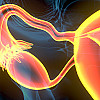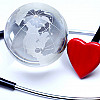Recent Blog Articles

Lead poisoning: What parents should know and do

How does waiting on prostate cancer treatment affect survival?

Does running cause arthritis?

Is alcohol and weight loss surgery a risky combination?

Preventing ovarian cancer: Should women consider removing fallopian tubes?

Healthier planet, healthier people

Is snuff really safer than smoking?

Will miscarriage care remain available?

Considering collagen drinks and supplements?

Does less TV time lower your risk for dementia?
Polycystic Ovary Syndrome
What Is It?
Estrogen and progesterone are the female hormones produced by the ovaries. The levels of these hormones vary during the monthly menstrual cycle. They are essential to the development of follicles, which are fluid-filled pockets, containing an egg that is released each month.
A third hormone, testosterone, also is produced by the ovaries in small amounts. Testosterone is in a broad class of hormones called androgens, and it is the dominant sex hormone in men. Between 4% and 7% of women produce too much testosterone in their ovaries. These women have a pattern of symptoms called polycystic ovary syndrome.
To continue reading this article, you must log in.
Subscribe to Harvard Health Online for immediate access to health news and information from Harvard Medical School.
- Research health conditions
- Check your symptoms
- Prepare for a doctor's visit or test
- Find the best treatments and procedures for you
- Explore options for better nutrition and exercise
I'd like to receive access to Harvard Health Online for only $4.99 a month.
Sign Me UpAlready a member? Login ».
Disclaimer:
As a service to our readers, Harvard Health Publishing provides access to our library of archived content. Please note the date of last review or update on all articles.
No content on this site, regardless of date, should ever be used as a substitute for direct medical advice from your doctor or other qualified clinician.
Free Healthbeat Signup
Get the latest in health news delivered to your inbox!
